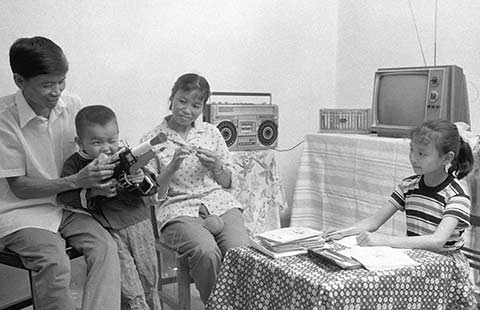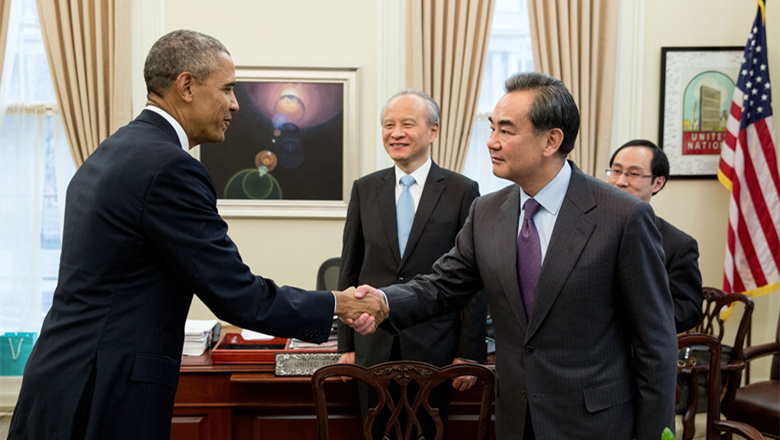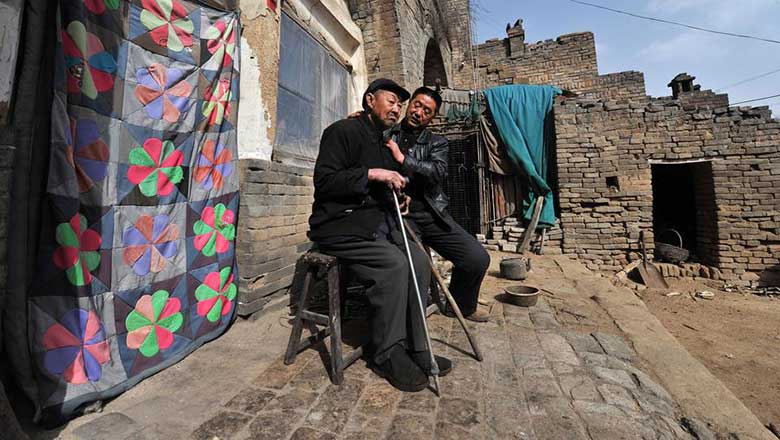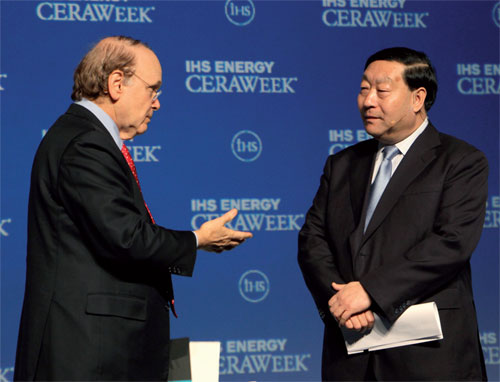Global energy village outlined
Updated: 2016-02-26 12:50
By May Zhou in Houston(China Daily)
|
||||||||
|
CERAWeek Conference Chairman Daniel Yergin welcomes State Grid Corporation of China Chairman Liu Zhenya to the conference in Houston on Thursday. May Zhou / China Daily |
Imagine a world where clean and green electricity is passed around by vast power grids not unlike the information superhighway of the Internet, connecting power providers and consumers worldwide across national boundaries.
Liu Zhenya, chairman of State Grid Corporation of China, painted such a vision on Thursday to governmental officials, energy industry leaders and experts from around the world at CERAWeek, a major annual energy conference hosted by IHS in Houston.
Dubbed Global Energy Interconnection (GEI), the vision of a global energy village has been adopted by the government as part of a national strategy to push for renewable energy in response to climate change and to meet energy demands with clean alternatives, and as part of China's Belt and Road initiative.
The State Grid has developed the necessary ultra-high voltage (UHV) grid technology to serve as a platform for extensive development, deployment and utilization of clean energy worldwide.
"In essence, GEI is UHV Grids plus smart grids plus clean energy. UHV grids are the key, smart grid is the foundation, clean energy is the principle," said Liu.
While governmental policy and advocacy from around the world will be important, the key to making GEI a reality will be its commercial viability, said Liu.
"We have done the numbers," he said. "Currently we have lowered the cost of green electricity produced in Xinjiang to a few cents per kilowatt with the estimated transmission cost to German or Japan at 4 cents. The current market price in those two nations is 25 cents/kw.
"With the advancement of new technology, the cost will be further lowered. Once people see the economic benefit, more and more companies will invest to make it reality. We will not rely entirely on governments," said Liu.
Building a domestic grid interconnection will be the first step toward completing the GEI, and it will also help reduce China's air pollution.
"It will reverse the current trend, reduce the smog, and increase GDP growth rate," said Liu.
To make GEI a reality, State Grid is taking the initiative of establishing the GEI Co-operation and Development Organization (GEIDCO) as a cross-border, cross-field and cross-disciplinary cooperation platform. The planned international organization will be made of world political leaders and experts.
"It may be established as early as in March this year in Beijing with offices planned for the three major continents," said Liu.
Huang Han, R&D project director at State Grid, presented research results on equatorial solar energy and polar wind energy. The State Grid organized 14 Chinese research institutes, five universities and worked with the Department of Energy of Russia for three years on the project.
"Our research indicates that with the UHV grids as the advanced electricity transmission technology, equatorial solar and polar wind generated power can be efficiently transmitted to the major consumer centers on each of the major continents," said Huang.
Liu also had a meeting with CERAWeek Conference Chairman Daniel Yergin on Thursday. Calling State Grid a "forward thinking company" and GEI an innovative vision, Yergin said that CERAWeek would like to work with State Grid to promote GEI. Yergin, who first heard of Liu’s vision a few years ago, applauded Liu for tirelessly pushing for the GEI.
mayzhou@chinadailyusa.com
- Venezuela, Qatar, Saudi Arabia, Russia to meet to stabilize oil market
- Gunman kills up to four in Kansas shooting spree
- Apple fights back in court, refusing to hack into iPhone for FBI
- Chinese may pursue Paramount stake
- S. Korea, US to launch working group on THAAD
- All bodies of plane crash victims recovered in Nepal

 Things you should know about the 2016 G20 meeting
Things you should know about the 2016 G20 meeting
 Walk down memory lane: Rural China in 1980s
Walk down memory lane: Rural China in 1980s
 A woman's artistic life
A woman's artistic life
 Milan fashion week opens with eclectic, embellished looks
Milan fashion week opens with eclectic, embellished looks
 Plastic-shirted Afghan boy gets signed jersey from Messi
Plastic-shirted Afghan boy gets signed jersey from Messi
 Adele steals the show at 2016 BRIT Awards
Adele steals the show at 2016 BRIT Awards
 US President Obama meets with Foreign Minister Wang Yi
US President Obama meets with Foreign Minister Wang Yi
 Elders, children cope alone in village after Spring Festival reunion
Elders, children cope alone in village after Spring Festival reunion
Most Viewed
Editor's Picks

|

|

|

|

|

|
Today's Top News
What ends Jeb Bush's White House hopes
Investigation for Nicolas's campaign
Will US-ASEAN meeting be good for region?
Accentuate the positive in Sino-US relations
Dangerous games on peninsula will have no winner
National Art Museum showing 400 puppets in new exhibition
Finest Chinese porcelains expected to fetch over $28 million
Monkey portraits by Chinese ink painting masters
US Weekly

|

|









